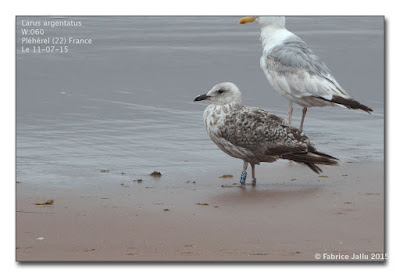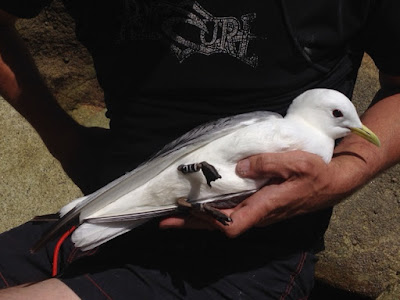With all the first broods now ringed, we can tally up the year and see how it compares to the last few...
| 2011 | 2012 | 2013 | 2014 | 2015 | |
| Sites visited | 32 | 34 | 32 | 44 | 40 |
| Unoccupied | 2 | 7 | 12 | 12 | 12 |
| Occupied but no breeding | 13 | 2 | 7 | 8 | 4 |
| Occupied but no breeding | 13 | 2 | 7 | 8 | 4 |
| Failures | 0 | 0 | 3 | 0 | 4 |
| Average brood size (where observed) | 3.1 | 3.1 | 2.4 | 3.5 | 3.5 |
| Number of chicks ringed | 33 | 46 | 19 | 63 | 70 |
So whilst we checked fewer sites than last year, we saw good rates of occupation and similar clutch and brood sizes to 2014, but managed to ring more chicks than any other year. What was different this year was the high number of failed attempts. Of these, two failed at the egg stage (the young pair above and another where the female was found dead mid-incubation) and two at the chicks stage.
One of the failures saw five large chicks found decapitated in the box. We've seen this once before and presumed it was predation by a Stoat, but we've since heard that adults under stress can sometimes kill their own chicks in this manner, so it was perhaps food stress that caused this particular loss. This happened overnight, being a grisly find for the barn owners when they turned on their nestbox camera in the morning.
But with more boxes being put up and monitored, we hope to have more interesting and enlightening stories to share over the coming years. Thanks as ever to the many landowners who let us into their barns and houses to monitor these birds and in particular to Shaun Boyns at the National Trust for coordinating all of the monitoring in Penwith.









